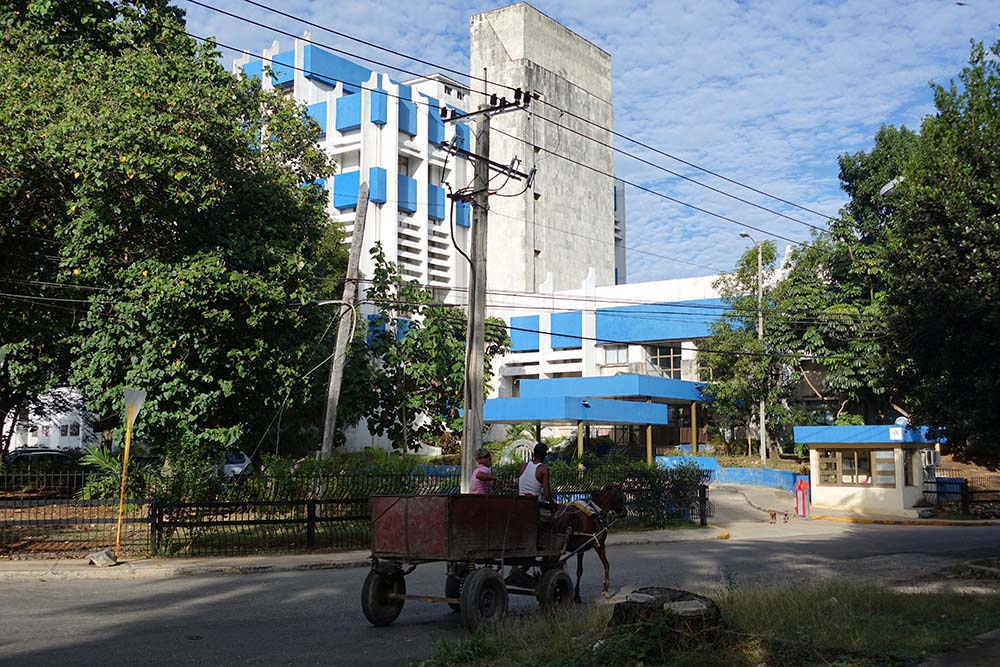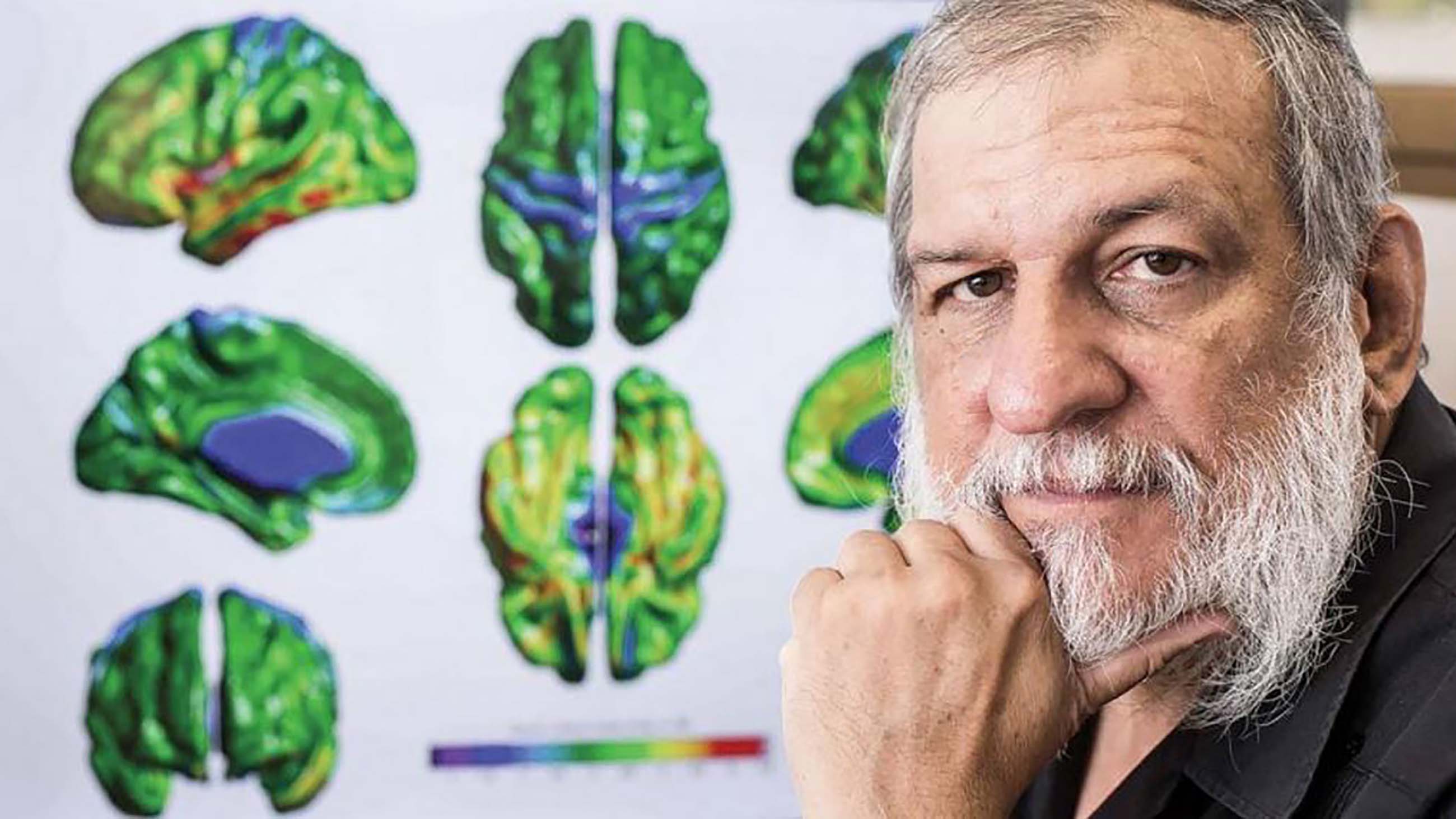Five Questions for Mitchell Valdés-Sosa
With American restrictions on travel lifting, interest in Cuba has skyrocketed, especially among scientists considering developing collaborations and student exchange programs with their Caribbean neighbors. But few researchers in the United States know how science and higher education are conducted in communist Cuba. Undark met with Dr. Mitchell Valdés-Sosa, director of the Cuban Neuroscience Center, in his office in Havana to learn how someone becomes a neuroscientist in Cuba, and to discuss what the future may hold for scientific collaborations between the two nations.

Mitchell Valdés-Sosa is the chief executive and co-founder of the Cuban Neuroscience Center (CNEURO), established in 1991.
Visual: R. Douglas Fields
It is helpful to appreciate some of the ways that higher education and research operate differently in communist Cuba. In contrast to the local institutional and individual control of decisions in the U.S., the central government in Cuba makes career and educational decisions for its citizens. Scientific research is directed by authorities to meet the needs of the developing country, and Ph.D. dissertation proposals must satisfy this goal for approval. Much of the graduate education takes place in biotechnology companies and research centers that are authorized by the government — a situation resembling internships in the U.S. Development, production, and marketing of products from biomedical research and education are all carried out in the same center, and the sales of these products provide financial support to the institution.
With the breakup of the Soviet Union in 1991, Russian economic support of Cuba ended, sending the country into a calamitous economic tailspin called the “Special Period” Scarcity of resources, crumbling infrastructure, lack of transportation and housing, food rationing and famine gripped the country. Venezuela then became a strong economic supporter until it suffered its own economic crash with the collapse of the oil market. Now, with the Obama administration’s reset of U.S.-Cuban relations, Cuba is looking to the West for a better future — though the incoming U.S. president Donald Trump brings uncertainty.
Valdés-Sosa is the chief executive and co-founder of the Cuban Neuroscience Center (CNEURO), which was established in 1991. He is responsible for the center’s daily operations and the development of new products. He received his medical degree from the University of Havana in 1972, and his Ph.D. from the National Research Center of Cuba in 1979 for his work on the physiology of the human auditory system. In addition to serving as the director of CNEURO, Valdés-Sosa is head of the National Group for Clinical Neurophysiology for the Cuban Ministry of Public Health, and a member of both the Cuban Academy of Sciences and the Cuban Society for Neuroscience. In 2006, he was appointed as an honorary professor at the University of Illinois at Chicago.
The interview was conducted last month, and our conversation has been edited for clarity.
Undark — How does one become a neuroscientist in Cuba?
Valdés-Sosa — The students that we recruit have usually done their undergraduate thesis research with us or with other neuroscience centers in Cuba. We have people coming in from medicine, computer science, physics, mathematics, biology, psychology, software engineering, biomedical science, and electrical engineering. There are neuroscience classes for undergraduate students in psychology and biology, but for all the rest, students become involved in neuroscience by working with us.
Other students are recruited because the Ministry of Labor finds a job for every person who graduates, and they begin to work with us in what is called their “social service.” All graduates from Cuban universities receive their education free, but when they graduate they have to perform two to three years of compulsory social service, and most continue for a year or two more.
UD — Students are selected for admittance to the master’s and Ph.D. programs by a central committee for all of Cuba; How does that process work?
VS — Students are selected by the committee according to their grades and the opinion of their classmates. It is a public thing, discussed by the classmates openly in the university. It could be seen as a conflict of interest to have students influencing the decision, but it is a situation where people are discussing publicly the merits of who works harder.
The Cuban Neuroscience Center is the coordinator of the master’s degree program in Cuba for neuroscience, but other institutes participate. Then after completing the master’s degree program, some individuals are selected to go on to the Ph.D. program. We are also the coordinators of the Ph.D. program. In fact, we are also the coordinators of the clinical neurophysiology program. So the basic science part of the clinical neurophysiology training for medical doctors is here, but then they go to the big teaching hospitals in Havana.
UD — How is the Ph.D. program structured and funded?
VS — Fidel Castro proposed creating what he called “closed cycle centers.” The centers would do basic research, applied research, development, have their own production facilities, and have their own companies, from which the income goes back to support the research. Our center was part of that effort. Our conception is that the use of technology has to be a pyramid. We try to develop tools that are for massive use that are very low cost.
UD — What was the process when you received your education?
VS — Now my case was very different. I was recruited in 1972. I was born in Chicago and came to live in Cuba in 1961 when I was 11 years old. My father was a Cuban doctor living in the U.S. and he had participated in the revolutionary movement, the 26th of July movement. He returned to Cuba to help develop medicine here and became a professor at the University of Havana. You must remember that in 1959, Cuba had 6,000 doctors. Immediately after the revolution, 3,000 left for the U.S. My father was one of the few coming the other direction.
Fidel Castro said at the time that we have to develop biomedical research in Cuba. I and others responded to this personal call by Fidel in the same way that people left their schools and went into the countryside to teach people to read and write. I was part of the initial group of people who joined this effort and we became the foundation for all Cuban biomedical technology.
The first Ph.D. thesis in Cuba was defended in 1972 by Dr. Thalia Harmony, and she was my professor. After Dr. Harmony left Cuba for Mexico, her successor had a heart attack, and I was then named in his place as head of the Department of Neurophysiology at the National Research Center in Havana. The Cuban Neuroscience Center began in 1991 and I was appointed director. My twin brother, Pedro, is vice director for research at the Cuban Neuroscience Center.
UD — What challenges must be overcome to develop neuroscience in Cuba, and what effect do you think the election of Trump will have?
VS — We have one serious problem, which is funding. The government gives us generous support in Cuban pesos, but there is very little hard currency, which we need to buy equipment or to travel abroad. Some of our centers that have successful “closed cycle” products can re-channel some of the money from international sales, but when you start analyzing research and education as a business, you start putting more money on the low risk projects. So what we need first is access to funding agencies across the world. Hopefully, we can receive funding from the U.S.
Second, we would like more infusions into Cuba of venture capital from private investors and U.S. companies.
We are also working to establish joint Ph.D. programs and master’s degree programs with other countries, but we are a small country. If everybody goes abroad to study for three years, science here is finished. The brain drain is an issue. It is happening, but it is happening all over the world. People tend to study abroad for a number of years, and sometimes they stay abroad. It has become a bigger problem in the last few years.
Salaries, we think, will have to grow, especially because of competition from the growing private sector. Employees of the State now have lower salaries than people who have their private restaurants or whatever. This is a problem that has to be solved.
If Cuban and American politics stay the same or degrade under the new administration in the U.S., we would do what we have done up to now. We would concentrate on Europe, Canada, Japan, and now China — which has emerged as a major player in science — as well as South America.
So let’s see what happens. I mean everybody is worried.
R. Douglas Fields is a neuroscientist. His last article for Undark, “Blind Rage and the Killing at Carderock,” appeared in November, 2016.










